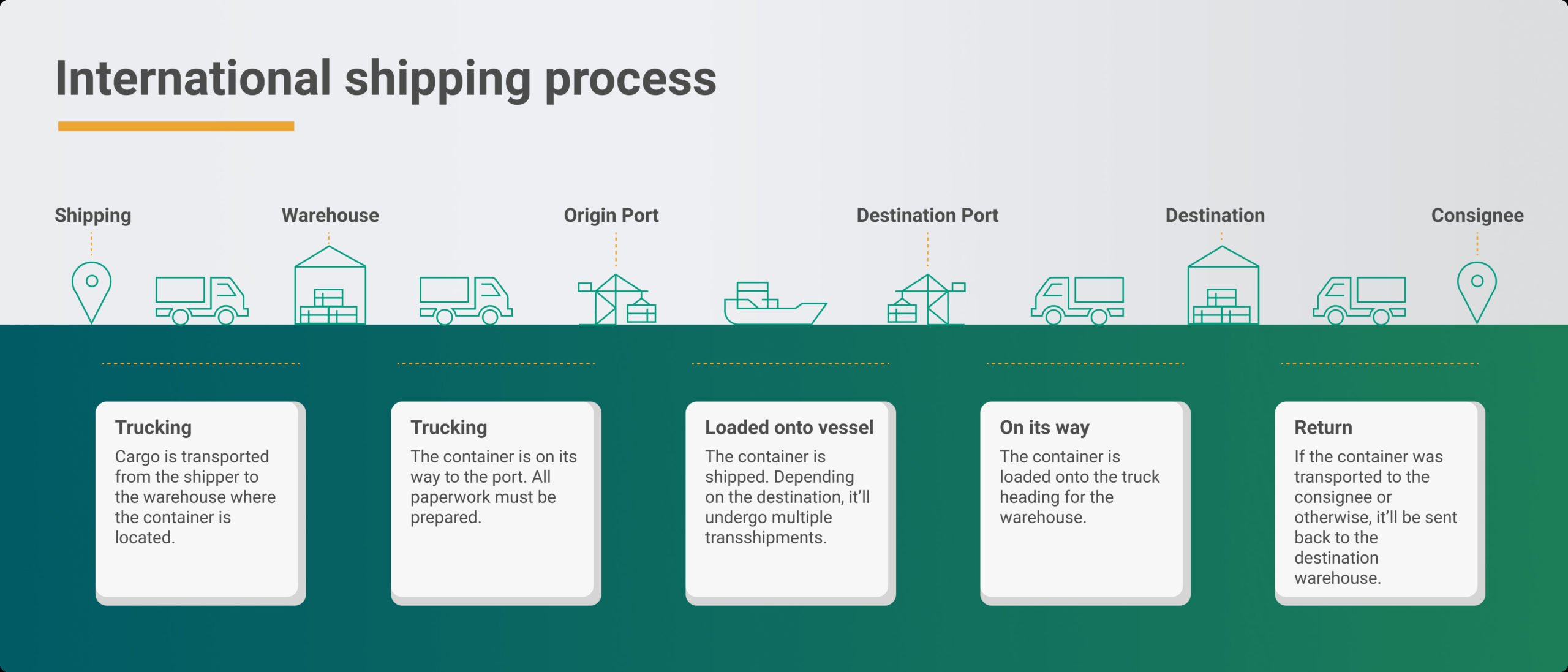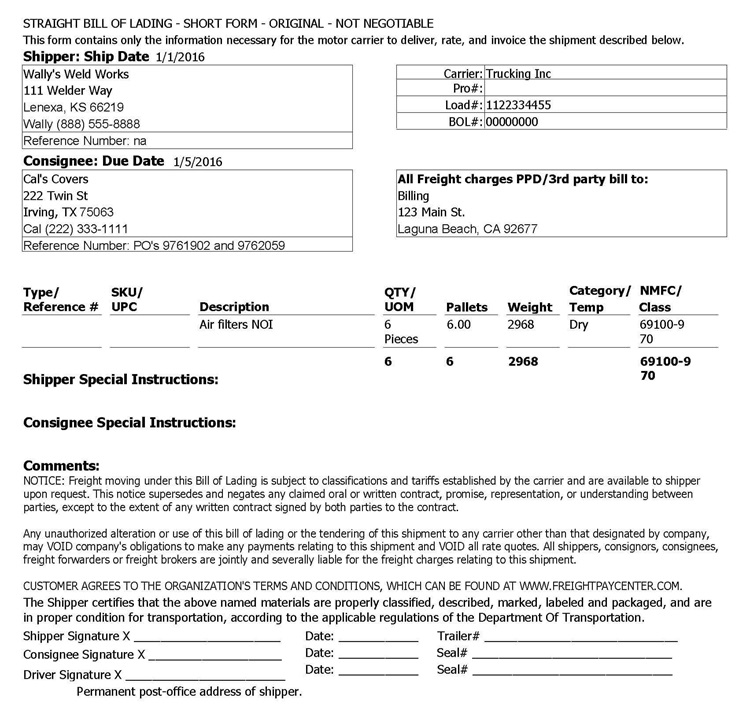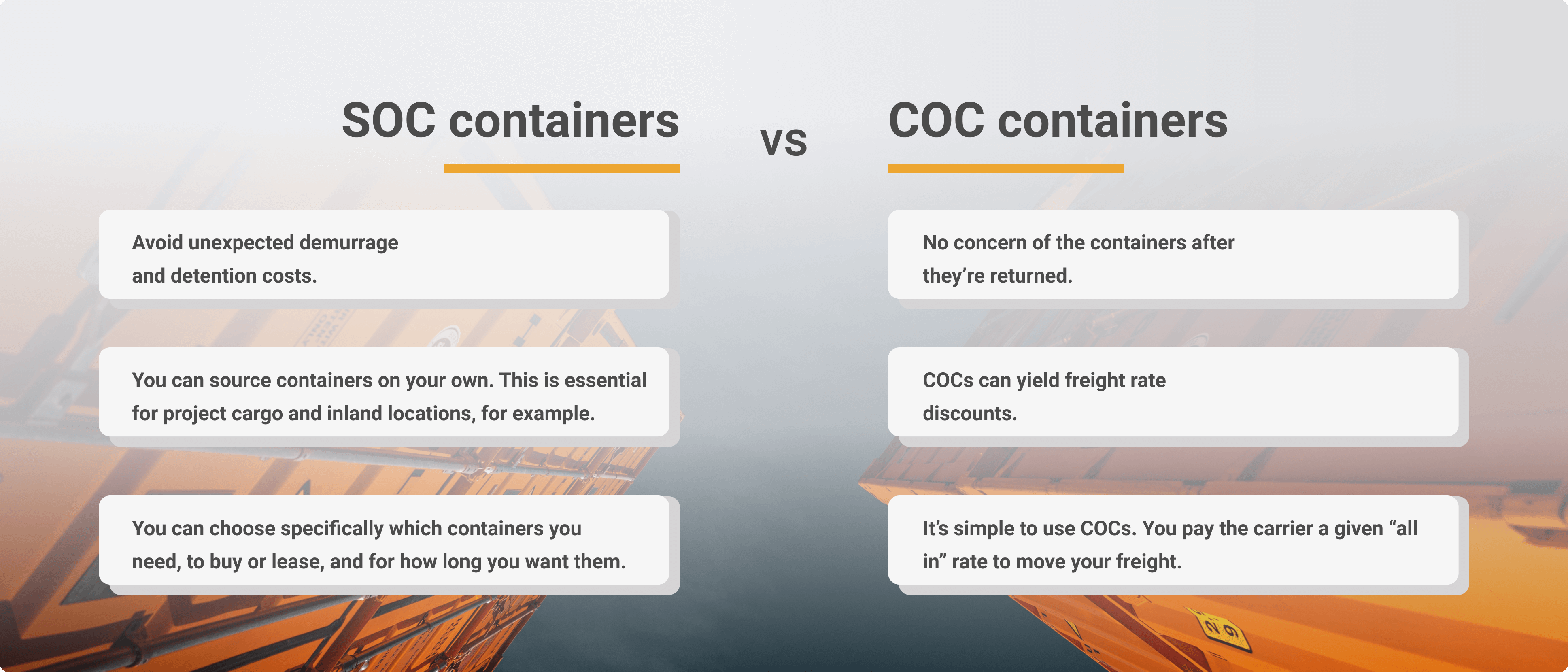Get the know-how on international freight shipping – including vital documents, crucial connections, and important factors to consider.
The ocean is vast and inconceivable. And each day, we use it for shipping freight overseas. Moving goods across the sea is a mammoth task and requires complex problem-solving skills.
But bar the spanning of oceans, there are numerous other, nitty-gritty details to consider. Things like detention and demurrage; congested ports; export licenses; Bill of Lading; Inspection Certificates… There’s a lot to organize.
That’s why we’ve stepped in. To streamline the process; reduce costs and wastage; ease frustration – and make your lives easier.
In the same spirit, we’ve put together this complete guide to shipping freight internationally. So that everything you need to know is in one place.
How does international freight shipping work?
International freight shipping is the transporting of goods to different countries in containers via land and sea. It’s a complex process of crossing borders with many rules and regulations.

Here’s a short example:
A product from China is ordered online from the US. A freight forwarder is chosen to plan the entire process, from container pickup to delivery. The product will then be collected from the Chinese factory by truck, loaded and sealed shut into a specific container, and taken to the port. Sometimes long stretches of the route are done by train.
Before being loaded onto a specific shipping vessel, documents will need to be provided to the authorities. When everything is cleared, the container will travel across the ocean to reach the US. Before docking and unloading, authorities will need to permit the vessel’s entrance. And before the container is sent to a distribution center, customs will also inspect the container. Once cleared, the product will be prepared at the center and sent to the online shopper via post.
While the above example seems simple enough, there are many challenges and decisions to be made before you even begin. Which container should you use? Which company are you going to lease it from? Is it better to not pay detention charges to someone else, and rather buy your own container? How do you organize a certificate of origin so the product can exit and enter the port without interruptions?
4 documents required for shipping freight internationally
If you don’t have these crucial documents at the time of shipping, expect delays and frustration. Without them, your container may be detained, resulting in additional admin, expenses, and negative reviews from customers.
Depending on where you’re shipping to, you might require more, but there are 4 vital documents regardless of origin and destination. They are:
1. Commercial Invoice
People don’t ship products for free. 99% of the time, there’s a transaction that’s taken place. The commercial invoice specifies the proof of sale and binding contract between seller and buyer.
2. Bill of Lading
This document proves the contract of carriage between shipper and carrier. It lists all the vital details needed to process the shipment, such as the ID number of the container seal.

3. Export Packing List
The Export Packing List details each item in the shipment, like the total number of packages and the size and volume of each. Transportation companies use this document to check against the forms on their side and to confirm that what they’re shipping isn’t illegal or hazardous.
4. Certificate of Origin
A Certificate of Origin proves your imports have come from a specific country or an ethical and permitted source. Take cotton from Xinjiang, China – for example. Although it’s some of the finest cotton in the world, it’s produced by forced labor. In protest of these human rights violations, many Xinjiang cotton products have been banned in the U.S, who now actively block their import.
For our full list of customs clearance documents, click here.
Surcharges when shipping freight internationally
Demurrage and detention. These are surcharge terms you’ll hear time and time again, and for good reason: they’re common, add up fast, and can lead to financial loss.
“Demurrage” refers to the overtime a container spends at a port or terminal, while “detention” refers to the extended use of the container detained elsewhere.
You risk paying these surcharges when you’re using carrier-owned containers (COCs). If a document is missing; the port is congested; a truck breaks down… anything that results in going over the agreed timeframe (or “free time”), you’ll have to pay the carrier a daily surcharge fee. When in this overdraft, you’ll easily pay a hefty $200 per container, per day!
Our solution to avoiding these fees? Using shipper-owned containers (SOCs) instead. When a freight forwarder, BCO, or NVOCC leases a container from the shipper, they don’t have to pay any of these charges. This is one of the many reasons why SOCs are becoming more and more popular.

Want to switch to SOCs and source them easily? xChange is the world’s first marketplace for container trading, where you can buy and lease containers from anywhere in the world. Get in touch with us below:
3 steps for international freight shipping
Joining the industry and not sure where to start? Here are 3 ways to kick off your career and ensure you’re making the right connections – and the right decisions.
Join a freight forwarding network
In a complex industry like shipping, it pays to be in the know. For that reason, 250+ freight forwarding networks serve as a support system and knowledge pool for its vetted paid members.
By joining a trusted network, you’ll gain access to shared services, customs brokerage, and collect vital information to other related services. Read more about xChange’s network partnerships here.
Work with a customs broker
Many freight forwarders work with and utilize the service of customs brokers to streamline the customs clearing process. Customs brokers are experts in international trade and the ever-changing regulations and specifics that come with it.
Connect with a customs broker to see if your documents are compliant, your goods meet state requirements, and many other services. As documentation needs can range vastly, they offer advice on personalized needs as well.
Track your shipments
You’ve built your shipping community. You’ve connected with a customs broker and are well on your way to building success. One last thing to cross off your list is to figure out how to track your shipments.
![]()
After all the administration and documentation, tracking is crucial to ensure the product has reached its destination and that everything has run smoothly. When selecting a transportation partner, make sure their tracking and real-time updates fit your standards.
How xChange can help with international freight shipping
At xChange, we looked at the convolutions of shipping internationally and asked, “how do we make this easier?” We’re proud to have created the answer: our digital solution – where all touchpoints are fused, and all gaps are covered.
With xChange, you can buy and lease containers online, compare market demands, join a community, connect with vetted professionals, conduct all transactions, and streamline every process at your whim. Saving you time, money, and mental capacity.
Ready to join the shipping revolution? Click on the banner below and schedule a demo with us!
Shipping freight internationally: Common FAQs
How much does it cost to ship freight overseas?
It depends on a range of factors, like size and weight of the container, the individual vendor, and the route. Typically, the further the distance, the more expensive it will be. Shipping a full, standard container overseas should cost between $2,000 and $3,000.
How long does international freight shipping usually take?
International shipping can take anywhere from 3 days to 4 weeks.
How do I calculate freight shipping costs?
The total container cost when shipping also includes local charges at the origin and destination ports, booking fees, pick-up charges, Terminal Handling charges, and sea/ocean freight charges. Remember to keep this in mind when calculating your freight shipping costs.
[custom-related-posts title=”Related Posts” none_text=”None found” order_by=”title” order=”ASC”]





